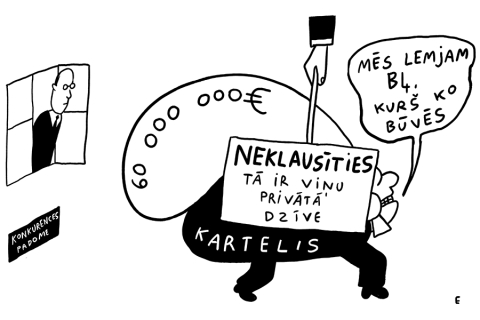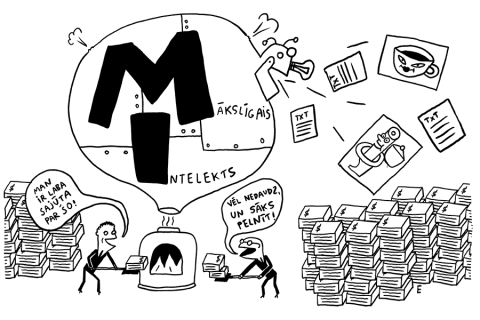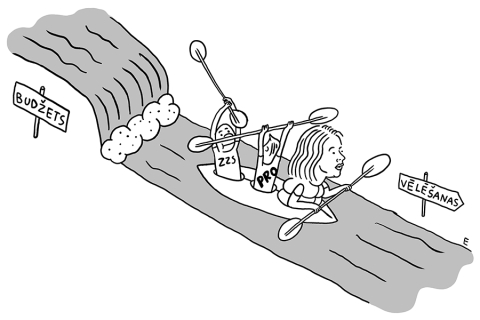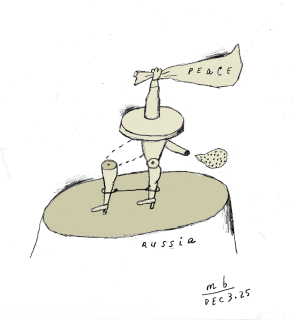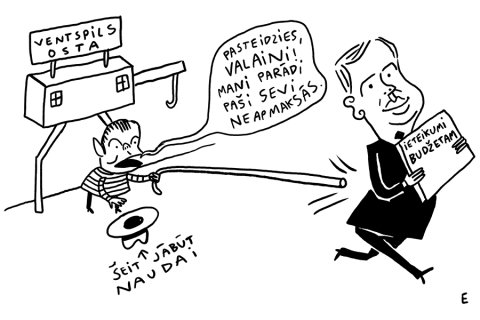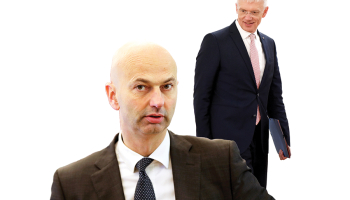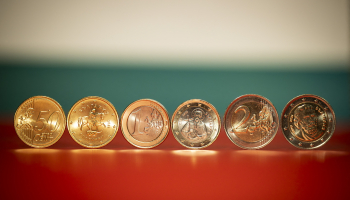Žurnāls Ir | Svarīgākais politikā, ekonomikā un kultūrā
Jaunākie raksti

Saeimas priekšsēdētāja aicina piešķirt Miera prēmiju Trampam. Papildināts
Saeimas priekšsēdētāja Daiga Mieriņa (ZZS) parakstījusi vēstuli Nobela prēmijas komitejai, rosinot 2025. gada Miera prēmiju piešķirt ASV prezidentam Donaldam Trampam. Mieriņas komentāri Ir liecina, ka šis solis nav saskaņots ar pārējiem Latvijas ārpolitikas īstenotājiem.

Kā Tramps pirmajā prezidentūras gadā spieda Ukrainu padoties Krievijai?
Pirms vēlēšanām Donalds Tramps vismaz 83 reizes bija solījis, ka karu Ukrainā izbeigs vienā dienā. «Es to izdarīšu 24 stundās,» viņš teica Vašingtonā 2023. gada jūnijā. Kopš ASV prezidenta inaugurācijas ir pagājis gads, un karš nav beidzies, bet ir sabrukusi agrākā ASV un Ukrainas partnerība

Mieriņa aicina piešķirt Miera prēmiju Trampam
Godina barikāžu aizstāvjus
Rēzeknes dome atsauc pārbaudi mēra sievas firmā
Lasīt vairāk →Īsi par svarīgāko ik rītu — pieraksties jaunumu vēstulei Ir Svarīgākais!

Svešuma baisais vilinājums
Debesu patvērums ir ASV literatūras klasika, kas atklāj Ziemeļāfrikas draudīgo pievilcīgumu

Katarse nav paredzēta
Valmieras teātrī iestudētā antīkā traģēdija Mēdeja sasaucas ar šodienu, bet šī saikne katram jāmeklē pašam

Siltā zvaigzne – piemiņas vārdi Uļjanai Semjonovai
Piemiņas vārdi slavenajai basketbolistei Uļjanai Semjonovai (1952—2026), kura pagājušajā nedēļā devās mūžībā
Raidieraksti
Karikatūra
Pētījumi
Bizness un ekonomika
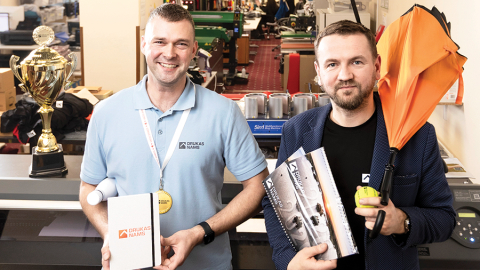
Viens nav cīnītājs
Jēkabpiliešus Raivi Pavloviču un Juri Vēveru apvienot divus tās pašas nozares uzņēmumus pamudinājuši pandēmijas radītie izaicinājumi biznesā. Savulaik sākuši ar masku apdrukāšanu, viņi drīz iekārtos stendus šā gada Saeimas vēlēšanu reklāmām

Labāk nekā citi – AKB Industrial biznesa veiksmes stāsts
Ne vienmēr vajag izdomāt divriteni no jauna. Var darīt to pašu, ko citi, tikai labāk — pēc savas pieredzes saka Liepājas puses uzņēmuma AKB Industrial īpašnieks Aivars Krūmiņš

Zaļenieku kokaudzētavas biznesa veiksmes stāsts
Latgales puika Imants Parfenovičs sapņoja par mūziķa karjeru, taču dzīve aiznesa uz otru Latvijas malu un pavisam citu profesiju. Pirms 30 gadiem veidoto uzņēmumu dārznieks vada vēl 73 gadu vecumā
Viedokļi
Personības
Eiropā
Recenzijas
Populārākie raksti

Mīlestība nebrīvē. Baibas un Laimona stāsts
«Katram no mums kaut kas ir uz mūžu,» tā ironiski par sevi saka jaunlaulātie Baiba Baikovska (38) un Laimons Daģis (47). Baibai uz visu dzīvi ir invaliditāte, bet Laimons ir uz mūžu notiesāts. Abi mijuši gredzenus cietumā

Saeimas priekšsēdētāja aicina piešķirt Miera prēmiju Trampam. Papildināts
Saeimas priekšsēdētāja Daiga Mieriņa (ZZS) parakstījusi vēstuli Nobela prēmijas komitejai, rosinot 2025. gada Miera prēmiju piešķirt ASV prezidentam Donaldam Trampam. Mieriņas komentāri Ir liecina, ka šis solis nav saskaņots ar pārējiem Latvijas ārpolitikas īstenotājiem.

«Mēs šeit paliksim.» Intervija ar jauno airBaltic vadītāju Erno Hildēnu
Apzinoties izaicinošo finanšu situāciju, jaunais airBaltic vadītājs Erno Hildēns sola nevis vienkārši taupīt, bet domāt par ieņēmumu efektivitāti

Mūžībā aizgājušās Noras Ikstenas fenomens latviešu kultūrā
Latviešu literatūras mūslaiku spožākā zvaigzne Nora Ikstena (1969—2026) izdzīvoja īsu, bet ārkārtīgi spilgtu mūžu gan literārā, gan personiskā nozīmē. «Pēc savas dabas esmu vitāls cilvēks, pat ja paslīd kāja, man gribas piecelties,» tā par sevi sacīja Nora


Ārpus rāmjiem. Kā tapa godalgotais koka bērnudārzs Salaspilī?
Koka bērnudārzs Salaspilī tapa par spīti noteikumiem, kas neļāva tādu būvēt. Šogad tas saņēma Latvijas Arhitektūras gada balvu

Vanadziņa māja Cēsīs – sapnis par viesnīcu un restorānu
Pirms septiņiem gadiem Cēsu vecpilsētas sirdī no gruvešiem atdzima leģendārā Vanadziņa māja, kurā jauni latviešu uzņēmēji cerēja piepildīt sapni par savu restorānu un viesnīciņu. Šoruden restorāns H. E. Vanadziņš pirmo reizi ieguva prestižo Michelin Bib Gourmand apbalvojumu


